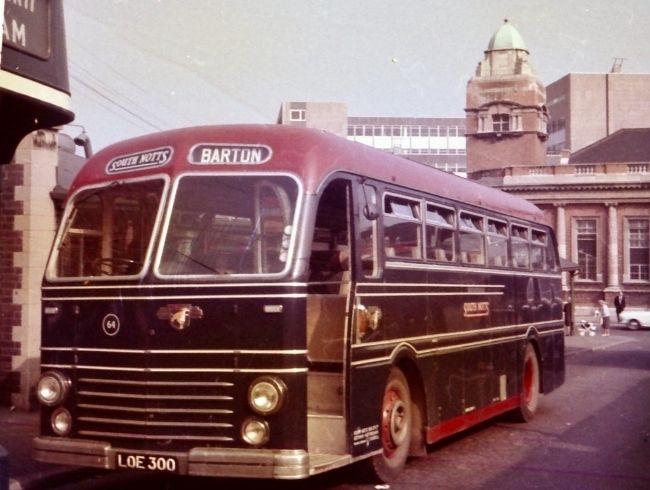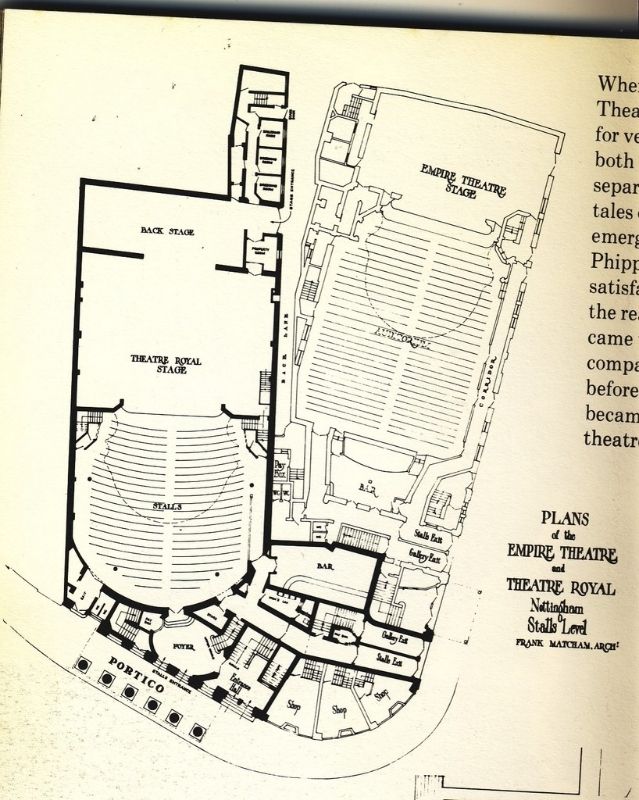-
Content Count
1,815 -
Joined
-
Last visited
-
Days Won
2
Content Type
Profiles
Forums
Calendar
Posts posted by Merthyr Imp
-
-
Surely it is pasties and not pastys.?
Depends what part of Cornwall you come from.
Only joking (as far as I know).
-
-
Just thinking what a tremendous construction job the station must have been without the benefit of modern machinery. Wonder how long it took and how many construction workers were needed?
They did have the benefit of 'Steam Navvys' (i.e. excavators) plus steam cranes and other steam-powered machinery.
According to some of the usual books excavation of the station site itself began in early 1897 and the station was open for traffic in May 1900.
-
Apparently those Scammells were still being built up to 1967 so that must have been one of the last ones.
-
Don't you mean easy puddies?
-
You forgot Hartley Wintney the great actor-manager, with his faithful retainer Old Sodbury (whose son - Chipping Sodbury - was the village carpenter).
-
 1
1
-
-
Sony and Cher
Beta and Max?
-
A little research shows Robinson was knighted for 'public and political service' rather than merely 'entertainment' so it was not just for his TV appearances.
His biography shows he's long been active in Labour politics, having been vice-president of the actors' union Equity in which he is still very active, plus spending some years on the Labour Party's National Executive Committee.
It seems he was also active in the "Make Poverty History" campaign during early 2005, in the lead-up to the G8 summit in Scotland, and is the patron for UK-based charity Street Child Africa.
-
I remember seeing Jim Iley as player-manager of Peterborough United. He took all the free kicks and corners - probably a good many of the throw-ins as well.
-
Regarding Ross Salmon, I remember in the earlier days of Test match cricket on the BBC (the days of Peter West) they'd mention 'our secretary and scorer Ross Salmon' and I wondered if it was the same person. Turns out it was - he seems to have been quite a character:
http://www.bbc.co.uk/devon/news_features/2004/ross_salmon.shtml
-
 1
1
-
-
Bengo was a Boxer puppy. It was very limited animation, I remember at the end he would wave goodbye with his paw.
Apparently it was narrated by Sylvia Peters:
http://www.turnipnet.com/whirligig/tv/children/other/bengo.htm
-
 1
1
-
-
Griffin & Spalding
Marks & Spencer
Bourne & Hollingsworth
Swan & Edgar
Debenham & Freebody
Army & Navy
I must have SOMETHING better to do...
-
Not bad stuff for army surplus.
-
Gilbert and Sullivan
Rice and Lloyd Webber
Bacharach and David
Goffin and King
George and Ira Gershwin
Rodgers and Hammerstein
Rodgers and Hart
Lerner and Loewe
Dubin and Warren
I MUST have something better to do...
-
Vickers and Armstrong
Metropolitan and Cammell
Orenstein and Koppel
Handley and Page
Mercedes and Benz
Davies and Metcalfe
Gresham and Craven
Dick and Kerr
Sharp and Stewart
Manning and Wardle
I must have something better to do...
-
When I was 9 years old I used to think Mike & Bernie Winters were great.
-
Jewel and Warriss.
Rawicz and Landauer.
-
Holes Newark Ales........ The worst I've ever tasted,
Ah, but Holes did great strawberryade! The best ever, and very volatile stuff - if you didn't unscrew the top slowly it would come out in a fountain.
Holes also did lemon-coloured lemonade - that's not something you see any more.
-
Errol Flynn and Meryl Streep.
You'll have to explain that one (to me anyway).
-
 1
1
-
-
In the book 'The Great Northern Railway in the East Midlands Vol.2' by Alfred Henshaw, published by the RCTS in 2000,there are two photos of Bulwell Forest station, plus one of a train on the embankment north of the station, and one of engines awaiting scrapping at Rigley's wagon works.
There also some in the book 'Railways in and Around Nottingham' by V. Forster & W. Taylor, published by Foxline in 1991 - two more photos of Bulwell Forest station, one with a railtour train, and one of a goods train passing the signal box. There is also one of an engine next to Leen Valley junction signal box, but I don't recall seeing any photos taken between that junction and Bulwell Forest station.
I haven't scanned any of the above photos because being large softback books it's not easy to do (not for me anyway!)
-
 2
2
-
-
I take stuff back to Tipperary every time
And that's a long way to go.
Sorry.
-
That plan is fascinating. I'd never realised that the Empire was quite a bit bigger than the Royal.
But notice the Theatre Royal had a bigger stage, plus the back stage area which the Empire didn't have at all. This was due to the latter's intended function as a variety theatre.
The book I mention gives the capacity of the Theatre Royal stalls area at around that time as 806, but that included 500 standing spaces in what they called the pit area. The stalls capacity after the late 1970s rebuilding is given as 479 (if no orchestra pit is in place).
The total Theatre Royal capacity in 1897 was 3,000 (including a lot of standing spaces!). Post-1978 it was 1,138. The Empire when opened could accommodate 2,500, but this was on three levels compared to the Theatre Royal's four.
-
There's Millwards in Merthyr Tydfil...
-
 1
1
-
-
Good picture. Yes, the door with 'Theatre' over it is the one I mentioned in #50.
I've scanned this plan of the ground floors of the two theatres (the bold lines showing the Theatre Royal). It shows there were two entrances/exits to the Theatre Royal behind that door - one to the stalls and one to the steps leading up to the gallery ('Gods'). When the Empire and the shops on that corner were demolished, as I've said elsewhere, that entrance to the gallery was still used, with a short flight of exterior steps leading up to the inner door shown just to the left of where it says 'Gallery Exit'. As part of the alterations the neighbouring exit from the stalls was removed, and a new booking office was put in that corner space.
to give a memory of my own, when we lived in Lincolnshire my father used to do some coach driving for a local firm, and I remember once him taking me along when he brought a coach party to see the pantomime in Nottingham. As the driver he was allowed in towards the end of the performance and I distinctly remember us going in and standing at the back of the stalls and watching it. It was 'Jack & the Beanstalk' and I have a strong memory of the giant because I (aged 8) found it rather scary. I also remember us going in at the side of the theatre rather than the front, so for many years I was under the impression that we'd gone into the Empire. But when I saw this plan it seems pretty clear we'd gone in through this door under discussion, and straight along the passageway to the back of the stalls (which is how I remember it).
What seems conclusive is that 'Jack & The Beanstalk', with Beryl Reid, was the 1958 pantomime at the Theatre Royal, and that would certainly fit in with the time I remember this happening. I was just doing an Internet search to double check this and came across this piece of film from 1958 which is well worth everyone's attention:
http://www.macearchive.org/Archive/Title/pole-city/MediaEntry/46110.html
The floor plan of the theatres, by the way, is from the small book: 'The Theatre Royal Nottingham 1865-1978' which was published by the council to mark its rebuilding.
-
 9
9
-





Nottingham Buses Through The Years
in Pete's Nottingham Transport Forum
Posted
Yes, that's mentioned in the book 'Nottingham City Transport' by F.P.Groves (Transport Publishing Company, 1978) - '...in October 1951...service 32 between Old Market Square and the General Hospital was converted to one-man operation. As all single-deck motor buses in the fleet had rear entrances the driver had to collect the fares before starting the journey.'
I suppose if there were no intermediate stops it would have been workable (must have been a fairly short route). No mention in that book of how long one-man operation of the route lasted.